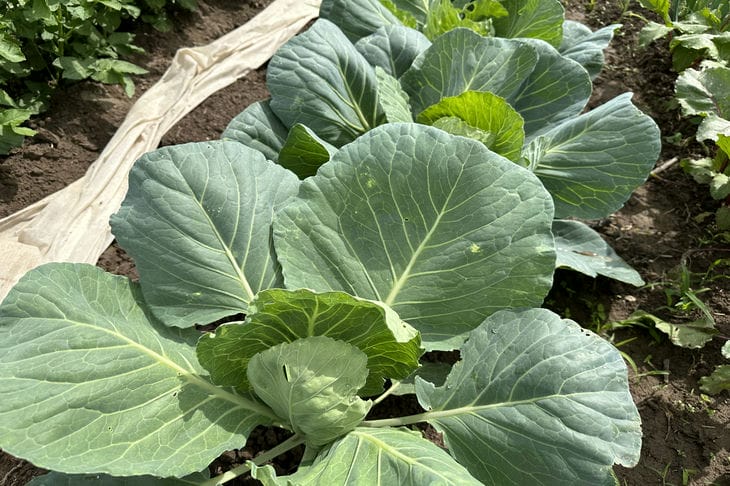At the end of June, many gardeners are faced with the question of what to feed cabbage with to ensure its healthy growth and a rich harvest.
Proper feeding during this period plays a key role, as cabbage is actively forming heads and needs special nutrition.
Why is timely feeding important?
Timely fertilizing of cabbage at the end of June allows you to provide the plants with all the necessary nutrients. During this period, cabbage especially needs nitrogen, potassium and microelements.
A deficiency of these elements can lead to slow growth, deterioration in the quality of heads of cabbage and even the development of diseases.
Therefore, the correct choice of fertilizers and their timely application help to achieve an excellent harvest, emphasizes the expert of the online publication "BelNovosti", scientist-agronomist and landscape designer Anastasia Kovrizhnykh .

Nitrogen fertilizers: the key to rapid growth
Nitrogen plays a vital role in the development of cabbage. It promotes active growth of leaf mass, which is especially important during the formation of heads.
For top dressing at the end of June, it is recommended to use ammonium nitrate or urea. These fertilizers are quickly absorbed by plants and provide them with the necessary nitrogen.
However, it is important not to overdo it with the dosage in order to avoid oversaturation of the soil with nitrogen.
Potassium and phosphorus: strengthening the root system and improving the quality of heads of cabbage
Potassium is necessary for cabbage to strengthen the root system and increase resistance to adverse conditions. Phosphorus, in turn, improves root development and promotes the accumulation of sugars in the heads.
Potassium and phosphorus fertilizers, such as superphosphate and potassium salt, are excellent for feeding cabbage at the end of June. These substances will help improve the quality of the harvest and its storage.
Organic Fertilizers: A Natural Approach to Plant Nutrition
Organic fertilizers such as humus, compost and mullein infusion are an excellent source of nutrients for cabbage.
They not only enrich the soil with useful elements, but also improve its structure, helping to retain moisture and improve aeration of the root system.
An infusion of mullein can be prepared by pouring cow dung with water in a ratio of 1:10 and leaving it for several days. The resulting solution is used to water plants, providing them with complex nutrition.
Micronutrients: Essential Supplements for Healthy Development
In addition to the main macronutrients, cabbage also needs micronutrients such as boron, manganese, and magnesium. Deficiencies of these elements can lead to chlorosis, head deformation, and other problems.
To provide cabbage with the necessary microelements, it is recommended to use special complex fertilizers containing all the necessary additives. The introduction of such fertilizers will help to avoid microelement deficiency and provide plants with complete nutrition.
Watering and fertilizing: important aspects of care
Regular watering plays an important role in feeding cabbage. Lack of moisture can lead to decreased absorption of nutrients and deterioration of the plants.
It is important to water the cabbage regularly, especially during the period of active growth of heads. It is recommended to combine watering with fertilization to ensure uniform distribution of nutrients in the soil.
Providing cabbage with the right nutrition at the end of June is the key to a healthy and rich harvest.
A combination of nitrogen, potassium, phosphorus and organic fertilizers, as well as regular watering will help you achieve excellent results and enjoy tasty and healthy cabbage heads.
Earlier, summer residents were told how to grow “sugar” tomatoes .









